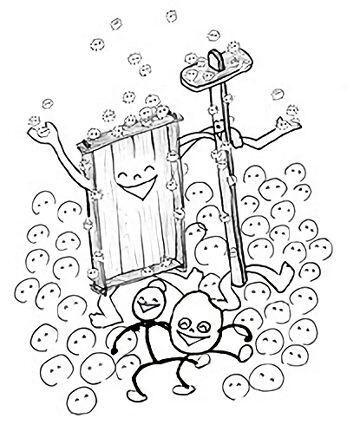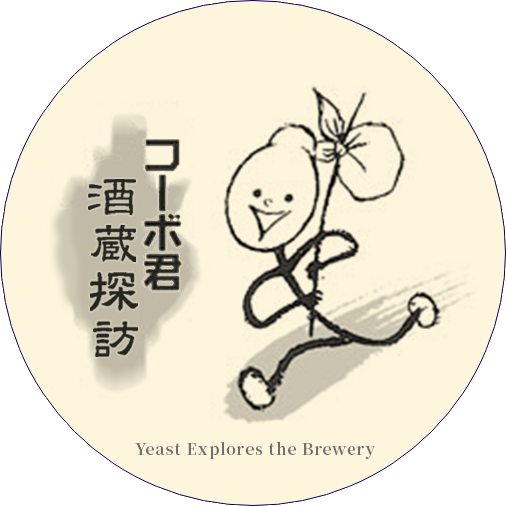| Yeast |
“The smell of new cedar wood! The aroma comes from both the walls and the ceiling. These are the new koji rooms which will from now on be used for making the koji.” |
| Koji |
“Yeast, I have been expecting you.” |
| Yeast |
“Koji, I have been looking forward to meeting you. These are good rooms with a very fresh atmosphere.” |
| Koji |
“Yes, it is important to exactly follow the traditional way of making koji.” |
| Yeast |
“What do you mean?” |
| Koji |
“It starts by building koji rooms with thick cedar planks, by acquiring large, 98-year old trees and sawing them into planks.” |
| Yeast |
“Are such large trees necessary?” |
| Koji |
“Of course! In order to build koji rooms that would fully satisfy us, we have managed everything ourselves, from the layout of the rooms to the careful selection of the materials. On top of that, we asked skillful carpenters to carefully build the koji rooms with their craftmanship.” |
| Yeast |
“Such rooms can be used for hundreds of years. You have convinced me!” |
| Koji |
“As before, we have four koji rooms, so that we can make the type of koji that best fits the stage in which it is used: for the yeast starter (moto-koji), for the first filling of the fermentation tank (zoe-koji), for the second filling of the fermentation tank (naka-koji) and for the third filling of the fermentation tank (tome-koji). |
| Yeast |
“Only Daishichi is so thorough!” |
| Koji |
“Yes. The only equipment we use are koji trays and box trays, we don’t use any machinery. What is important for Daishichi is to aim for the highest quality, not to save labor. In these koji rooms we can, depending on circumstances, individually adjust the time, the temperature and also the humidity. The ready koji is not transported by pneumatic tube but gently on pushcarts.” |
| Yeast |
“That shows a strong preference.” |
| Koji |
“But the most important thing is again something else.” |
| Yeast |
“What? Aren’t these fine koji rooms what is most important?” |
| Koji |
“No, more important than anything else are the micro-organisms that live in Daishichi’s brewery. Those bacteria are unique to Daishichi and they live especially in the koji rooms.” |
| Yeast |
“I’ve heard that in the case of kimoto, the taste of the sake is different depending on the brewery. Is that right?” |
| Koji |
“Yes, that’s correct. That comes from the difference in lactic acid bacteria. Daishichi’s lactic acid bacteria are the treasure of the brewery – a specialist has even said that they are the treasure of the Japanese sake world.” |
| Yeast |
“Really? How many kinds of lactic acid bacteria are present in Daishichi’s brewery?” |
| Koji |
“We have more than 10 kinds of lactic acid bacteria. But, strangely, even if you would make a culture of one and take that to another brewery, the sake definitely will taste different from Daishichi.” |
| Yeast |
“Because the bacteria are in perfect balance, and that balance must not be disturbed. Was there no problem when the new koji room was built? |
| All Kojis together |
“None at all, Yeast.” |
|
 |
| Yeast |
“Wow! I’m surprised that there are so many kojis.” |
| All Kojis together |
“We are the kojis that have been created during Daishichi’s long history. In the new brewery we will keep bringing on the micro-organisms as before. Don’t you worry, implements.” |
| The Implements in the Koji room |
“We are your partners in the koji room. We have many microbes inside ourselves, so there is no worry.” |
| Yeast |
“OK, let’s together create a new 100-year history. Hurrah!” |





